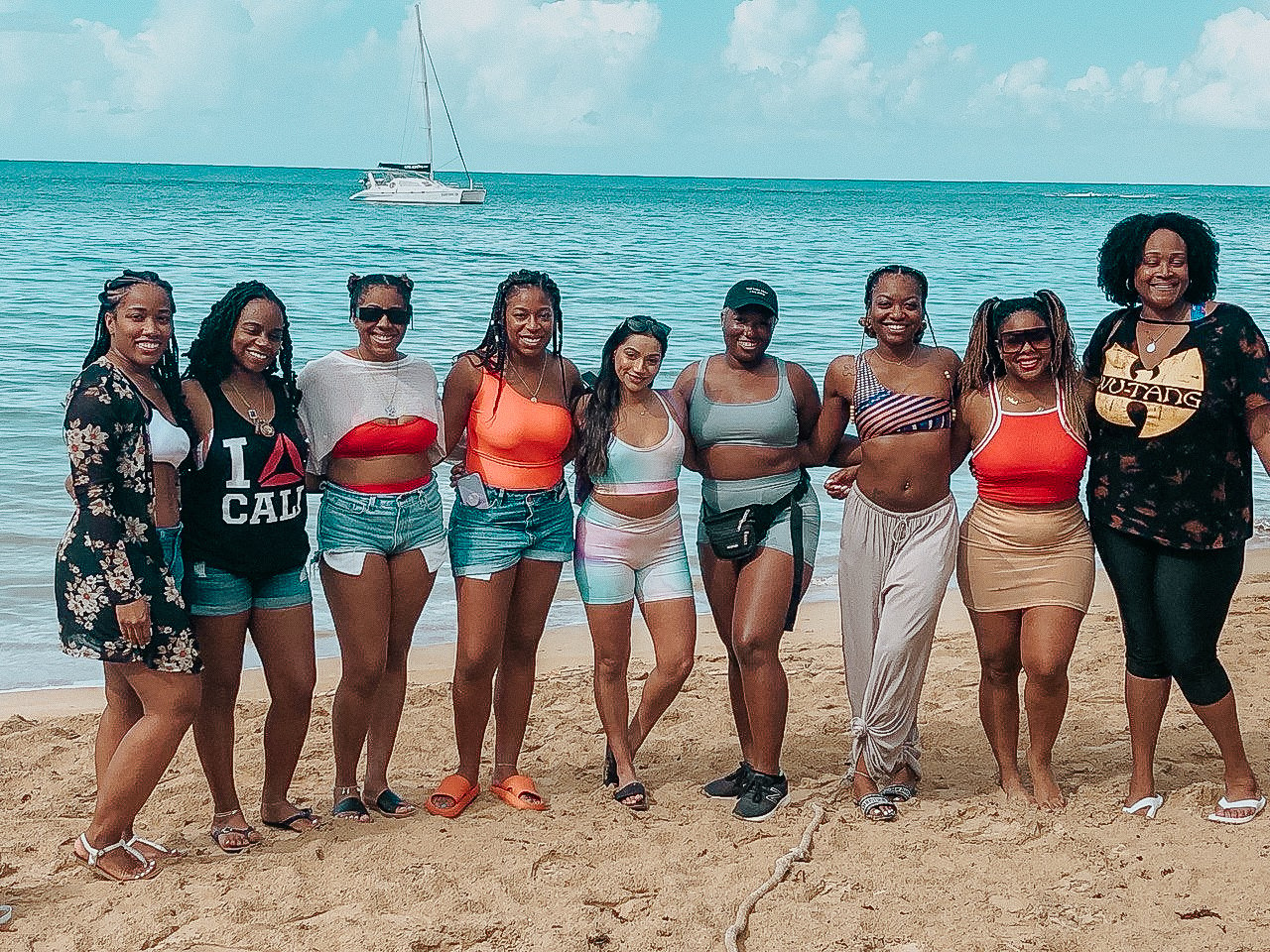Sure, you could load everything into a massive rolling suitcase for your next trip across the pond, but then you’re stuck lugging that monster through cobblestone streets, up staircases, and across the busy city center to your hotel. When traveling with checked luggage, most travelers will find they don’t even use everything they brought, whether it’s a few shirts that never get worn, a book that never gets read, or extraneous electronics that only get used once.
So, for your next trip, consider learning how to pack only a carry-on. You’ll save money on baggage fees, save time waiting for your suitcase on the luggage carousel, and save your poor muscles from having to cart around a massive backpack or a suitcase you could fit into. Plus, carry-on bags also offer peace of mind because your bag stays with you at all times, eliminating the possibility and stress of lost luggage.
It might seem daunting to restrict your packing space so much, but carry-on travel can actually be quite liberating. Living a minimalist lifestyle during your trip will allow you to be a lot more flexible in where you go and what you do, and it’s a lot easier than you think. Follow these carry-on packing tips to travel light like the pros. Once you do, you’ll never go back.

Pack your personal item wisely
Most airlines allow a carry-on bag and a personal item, so be sure to pack both of these carefully. Know which items (like food, passports, electronics, etc.) will need to come out of your bag at security, or which items you’ll want on the plane. Keep them easily accessible to avoid rummaging through your belongings and needing to repack them all unnecessarily.
Resist the call of your shoes
It doesn’t matter where you’re going; you’re not going to need six pairs of shoes. There. We said it.
One of the best ways to pack a carry-on is to not. Wear your bulkiest shoes onto the plane to save space, and if you really need another pair, pack a pair of versatile flats or sandals that don’t take up much room in your bag. Shoes are one of the bulkiest items to pack, and even when you squash them down or stuff your socks and undies inside them, they still take up space.
Follow the 1-2-3-4-5-6 rule
The general rule of thumb for packing a carry-on for a week-long trip is this:
- 1 hat
- 2 pairs of shoes
- 3 bottoms
- 4 tops
- 5 pairs of socks
- 6 pairs of underwear.
Anything else is extraneous, and if we’re being perfectly honest here, you could easily get away with a lot less if you re-wear clothes or do some laundry while you travel.

Invest in some compression bags
Compression bags are a must-have when considering how to pack a carry-on. They push all the air out of your clothes, making sure they take up as little space as possible. If you fold or roll your clothes carefully and then compress them in bags (extra points if they’re organized so you can easily find what you need), you can pack them into your carry-on like neatly stacked bricks. Compression bags are a solid investment for frequent travelers, and also serve the added benefit of providing protection against any leaks or rain for your belongings.
Roll your clothes
Rolling your clothes instead of folding them is one of the most popular tips for traveling light. It’s like the cheater’s version of packing with compression bags, and if you combine both of those tips, you’ll save even more space (and also minimize the number of wrinkles in your compressed clothes). Check out this tutorial on YouTube for tips on rolling your clothing like a pro.
Pack pieces that go together
Deciding which clothes to pack can be one of the hardest parts of going on a trip. Especially when you’re traveling with just a carry-on, you need to make sure you pack clothes that are light and versatile. A great way to pack is to choose a single-color palette and make sure all your clothes fall within it, so you can mix and match all your tops and bottoms blindfolded and still end up looking great. Or bring dresses and only one or two pairs of leggings, which are much less bulky than shirts and pants. You can also choose to go with one or two ‘traveling uniforms’ that are pretty basic and similar, and bring a couple of bright scarves and accessories to dress them up and make them feel different.
Go digital wherever you can
Books are bulky and heavy, but an e-reader is not. If your ebooks are on a tablet that can also replace your laptop for your trip, then that’s just a bonus. Or better yet, just bring your smartphone. It can access the internet, provide you with ebooks, work as a navigational device, and even function as your camera for the trip.
Don’t stress if you forget anything
Unless you’re traveling to an incredibly remote location, don’t worry about forgetting the little things. You’ll be able to buy shampoo, toothpaste, and even a warmer jacket while traveling. In fact, depending on the length of your stay, it might be in your best interest to leave some of these items, like toiletries, off your packing list entirely. You can buy them when you get there and save the space in your carry-on bag for other important things, like one more shirt or extra space for souvenirs.
Pack and repack
If you have a tendency to overpack, then try packing your carry-on bag a few nights before you leave for your trip. Regardless of whether everything fits, go through it again the next night, and you’ll be surprised at how much stuff you decide you don’t really need to bring. Keep in mind the tips listed above, and over the course of a few days, you’ll pare down your luggage until it’s just right.
Say ‘au revoir’ to bulky baggage
By following these carry-on packing tips while you travel, you can kiss your massive suitcase goodbye and say hello to the world of light traveling. Carry-on travelers can arrive a little later to the airport, don’t have to worry about losing their bags, and can travel much more flexibly. It might take a bit of trial and error before you get it right, but that’s perfectly okay! Every test run means another trip you get to take, and that’s the fun part.
- Recent
- Topics
- Archive
On the other hand, you can use compression bags or packing cubes for heavy clothes. These bags or cubes have the air suction capability to remove excessive air from around or inside your clothes, creating extra volume in your luggage.
Packing Tip 3: Prevent Liquid Leaks
For travellers with pre-existing medical conditions or parents travelling with infants or babies, certain items, such as prescription liquid medicines or baby milk, will inevitably be on their travel packing list. It is imperative to ensure no leakage results from bringing these essentials when boarding a plane. These items must be stored and sealed in a container with plastic wrap, such as a resealable zip-lock bag. Improperly packed liquids may lead to security issues and confiscation, causing unnecessary delays and setbacks to your trip.
Packing Tip 4: Utilise the 3-1 Packing Ratio
To avoid overpacking, it’s necessary to pack what’s only essential – which means that you don’t have to bring the whole closet of your clothes to your trip. Try to mix and match with your travel outfits by adopting the 3-1 packing ratio. You can pack three tops for a pair of versatile trousers or a skirt that works for multiple stylistic options. With this approach, you can create and maximise the space of your luggage, making way for other important items.
Packing Tip 5: Make a Packing List
A comprehensive packing list is an essential step during the final preparation for your trip. Some of the items on this list can vary depending on the duration of your stay, the weather conditions, or planned activities in your destination. Consider these factors when listing out the key items for your journey. The primary goal of making this list is to ensure that you can have a seamless travelling experience by avoiding situations of over-packing and forgetting the travel essentials, as these circumstances can prolong the time you spend commuting or create unnecessary detours from your itinerary to acquire the missing items.
Essential Items Checklist
Apart from the specific items that cater to individual needs, the following are the ultimate travel checklists that detail the essential items that anyone should include in their carry-on luggage and checked luggage.
Carry-on Luggage Checklist
Carry-on luggage should contain valuable and fragile items, as well as travel essentials that you keep closely for immediate needs and in case of emergencies or border checks for flights. The full list includes:
- Identity documents such as a passport, visa, or ID card
- Boarding passes or tickets
- Medical/travel insurance card or proof
- Driver’s licence
- Prescription medicines along with doctor’s certificate (if needed)
- Wallet
- Mobile phone
- Cash in foreign currency
- Credit card
- Portable Charger (Prohibited for checked luggage)
- Umbrella
- Laptop or tablet
- Female sanitary items
- Small bandages
- Glasses or contact lenses
Checked Luggage Checklist
For the checked luggage item checklist, it is essential to avoid packing any valuable or important travel documents. You should emphasise packing items such as clothing, toiletries, and semi-essentials that take up a larger space and don’t require your immediate access during the trip.
- Travel Adapter
- Clothes
- Underwear
- Pyjamas
- T-shirts or shirts
- Trousers, jeans, dresses, or skirts
- Hats
- Jackets or coats
- Socks
- Shoes
- Slippers
- Toiletries
- Toothbrush
- Toothpaste
- Towels
- Shampoo
- Bodywash
- Comb
- Tissues
- Sun care
- Cosmetic products
- Medicines (e.g. antihistamines for allergies, antacid medicine for upset stomach)

